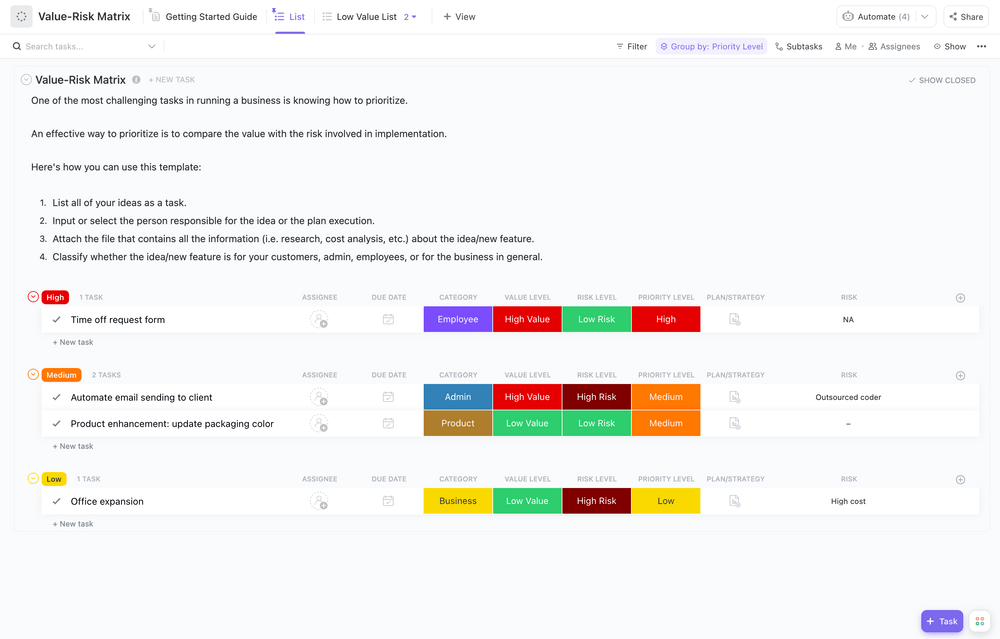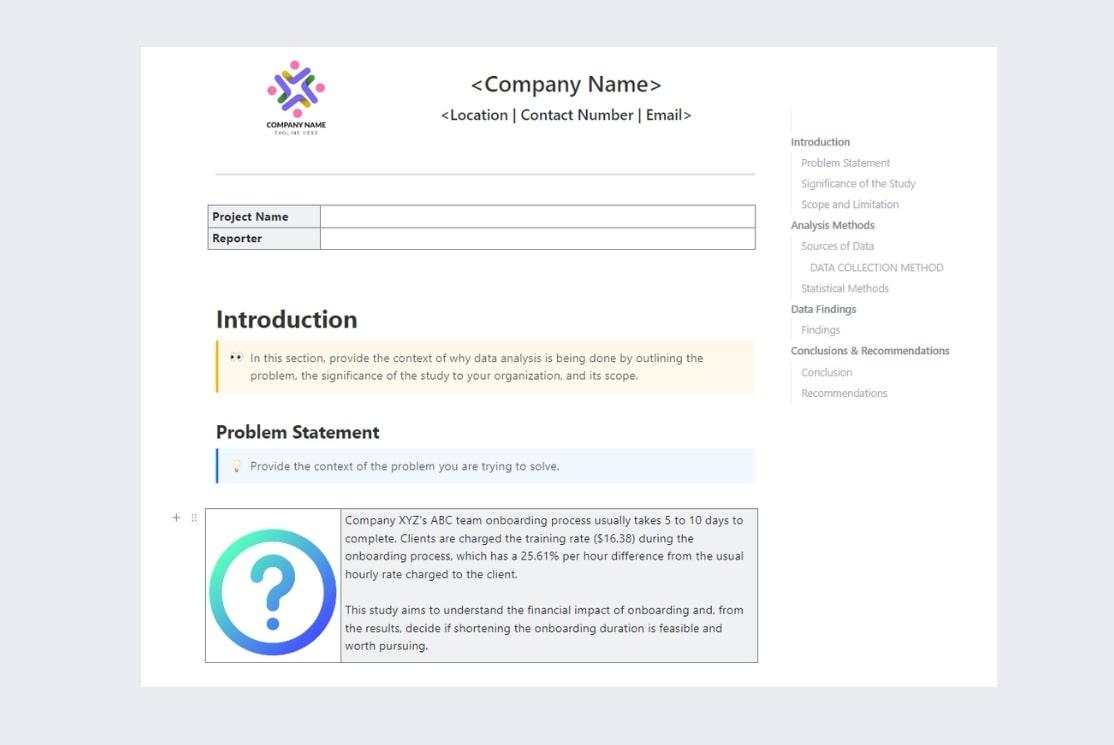How to Use the VRIO Framework to Set Your Product Apart

Sorry, there were no results found for “”
Sorry, there were no results found for “”
Sorry, there were no results found for “”

Business management teams spend a lot of time understanding external factors, through user research, market research, competitor analysis, etc. Few invest similar time and energy into internal analysis.
However, internal analysis, i.e., a thorough study of one’s resources and capabilities, provides strategic insights into their competitive potential. One of the most popular internal analysis frameworks is VRIO.
In this blog post, we delve into what that is and how you can use it as part of your strategic planning process.
VRIO framework is a business analysis tool designed to evaluate how a company’s resources and capabilities define its competitive advantage.
VRIO is an initialism for Value, Rarity, Imitability, and Organization. It measures each resource/capability on these four dimensions to identify its competitive implications.
Proposed by management professor Jay Barney in the early 1990s, VRIO asks four questions, the answers to which define whether it creates a competitive advantage. Let’s look at them.
To begin with, any resource or capability needs to be valuable. This means that it must enable an organization to capture opportunities or eliminate threats to create competitive advantage.
Exploiting an opportunity typically creates additional revenue, whereas eliminating a threat reduces costs. Both of these actions increase the bottom line, adding value overall.
For example, the large language models (LLMs) and ChatGPT are valuable capabilities of Open AI because they have enabled the organization to tap into revenue opportunities across industries.
If your resources are not valuable, you are at a competitive disadvantage. If they are valuable, check for rarity.
A valuable resource also needs to be rare to create competitive advantage. Rarity examines whether the resource/capability is scarce or uncommon among competing firms. This dimension is also what strategists consider differentiation.
Rarity can be technical, cultural, or behavioral. For example, if your organization has a culture of collaboration, you might be more innovative as a group, creating a rare trait.
If your resources are valuable, but not rare, you are likely to achieve competitive parity with the market, as everyone has your capabilities too. If your resources are valuable and rare, time to move to the next step.
A valuable and rare resource must also be costly or difficult to imitate, if it has to create sustainable competitive advantages. Essentially, this means that no competitor must be able to easily replicate your resources and get ahead within a short time.
For example, if the capability in your organization is a unique process of agile development that dramatically accelerates deployment cycles, competitors will find it difficult to imitate that without understanding all the factors that led to it. Patents and copyrights also create inimitability.
If your resources are valuable, rare, but imitable, you will only have temporary competitive advantage (until someone imitates you).
If your resources are valuable, rare, and costly/impossible to imitate, you’re ready for the next step.
The ‘organization’ aspect of the VRIO Framework determines whether a company is structured and ready to effectively exploit its valuable, rare, and inimitable resources. To be organized to exploit its resources, a company might need:
For example, having innovative technology (a valuable and rare resource) won’t help if your company lacks the R&D capabilities to develop it or the marketing expertise to sell it. The collection of tangible and intangible factors that enable a business to exploit its capabilities is called ‘organization’ in the VRIO framework.
If your resources are valuable, rare, and inimitable, but if you don’t have the organization to capitalize on it, you will be left with unused competitive advantage.
If your resources are valuable, rare, inimitable, and you have the organization to exploit them, voila! You have sustained long-term competitive advantage.
When we speak of VRIO, one key framework that keeps appearing in contrast is the SWOT analysis. Let’s see how the two compare.
While both are management frameworks that evaluate particular business factors, VRIO and SWOT are distinct from each other. These SWOT analysis templates will help see the difference.
At a glance, some of the most important differences between VRIO and SWOT analysis are as follows.
| VRIO | SWOT |
|---|---|
| Evaluates a company’s resources and capabilities | Assesses strengths, weaknesses, opportunities, and threats |
| Focuses on evaluating internal resources and capabilities | Focuses on examining internal and external factors |
| Specific to factors influencing competitive advantage | Generic to several factors that influence the business |
| Useful for identifying and exploiting competitive advantage | Useful for strategic planning and designing tactical moves |
Bonus: Here are some of the top SWOT analysis software to make your jobs simpler
In theory, the VRIO framework is a clear and comprehensive approach to shaping an organization’s advantage. In practice, it can be complex. Let’s take the example of Google’s search engine to demonstrate.
Google is still the most-used search engine, beating competition by miles. However, the recent rise of Generative AI has brought Google search’s competitive advantage to question. Let’s use the VRIO framework to examine this capability.
Google’s search algorithm is valuable as it provides:
The algorithm’s complexity and efficiency in handling billions of queries daily make it rare, as no other search engine matches its level of precision and speed.
The algorithm is costly to imitate due to its advanced machine learning integration and the vast amount of data Google processes to refine it.
Google is well-organized to capitalize on this resource; it continuously invests in R&D to improve the algorithm and has the infrastructure to support its operation at a massive scale.
If that sounds easy, let’s understand how you can use the VRIO framework for your organization’s resources and capabilities.
The primary purpose of the VRIO framework is to gauge whether the resources and capabilities you currently have can contribute to sustained competitive advantage. Here’s how you can use that to your advantage with any of the best project management tools.
First things first, identify what you have. Every organization has a number of resources and capabilities. This could include tangible assets like technology and equipment or intangible assets like brand reputation, intellectual property, and human skills.
Begin by taking a comprehensive inventory across every business area, from operations and marketing to finance and human resources. Make a list of these on a robust project management tool like ClickUp for easier analysis later.
ClickUp’s data analysis findings template is a great place to start. This ready-to-use, fully customizable template can help you identify and analyze large amounts of data without much work.

While you can conduct VRIO on every resource or capability, shortlist a few critical ones. Use your instinct to know whether a resource is valuable, then rare. This should eliminate the non-critical ones.
With a handful of resources to evaluate, you’re on your way.
Assess whether each resource and capability you’ve identified has value. For example, are your project management resources contributing towards reducing costs, improving product quality, enhancing customer satisfaction, or enabling the company to innovate faster than the competition?

Filter all the valuable resources/capabilities you have to determine rarity. Conduct thorough research to know who else has the resources you have and in what way.
For example, if you’re using VRIO in human capital management, you might identify how many professionals have the skills you have, what the talent gap in the market is, if there are other geographies that have similar resources, etc.
ClickUp resource management helps you manage all your resources in one place. Use the description, nested comments, custom fields, etc., to cover all the aspects of a resource’s rarity.

Now, with all the valuable and rare sources/capabilities, how many are inimitable? What would it take for a competitor to duplicate or substitute what you have?
For example, if you have the best machine learning engineers in the country, what would it cost a competitor to assemble a similar team in terms of compensation, training, relocation, etc.
Resources and capabilities don’t create competitive advantage in siloes. They create an environment designed to exploit your capabilities. Look at your company’s PMO structures, processes, policies, and culture to see if they support or hinder the effective use of your resources.
ClickUp Dashboards are a great place to gather this information. You might also have data around organizational hierarchy, reporting structures, team availability, product management KPIs and metrics, etc. on the platform.

Based on the results of the VRIO analysis, capitalize on your competitive advantage. For example, if you have great machine learning engineers (resource), but don’t have the R&D set up to create innovative products (organization), invest in the latter.
If you have the facilities, but are unable to retain employees, reconsider your org structures. Use one of the resource planning templates to plan retention strategies for the future.
Design your strategic management and operations strategy around your VRIO findings.
While you’re trying the VRIO framework for your analysis, here are some advantages and limitations to keep in mind.
The VRIO framework is a great tool to evaluate your competitive advantage from time to time. Here’s why.
Easy to implement: VRIO is a simple 4-step framework with clear criteria that you can consistently apply across different resources and capabilities.
Focussed: It is internally focused, limiting the impact of external forces in the decision-making.
Simplicity: It requires decision-makers to ask specific, directed questions about each resource, simplifying and streamlining analysis.
Strategic: This framework’s insights enable managers to make informed decisions about strengthening existing resources, developing new capabilities, or potentially divesting resources that do not provide competitive advantage.
Growth-driven: VRIO directs strategic investment in resources that are likely to provide the best outcomes. By enhancing VRIO-qualified resources, you can expand your market share more effectively, innovate, and improve profitability, thereby driving direct growth and long-term success in the marketplace.
Despite these advantages, VRIO is not the singular solution for all problems. It brings with it limitations that need to be addressed from time to time.
At its core, VRIO is static analysis in a dynamic environment. The framework evaluates resources at a specific time without accounting for the dynamic changes in the market and industry that can quickly alter the strategic significance of these assets.
As business environments evolve, the value and rarity of resources can fluctuate, potentially leading to outdated or irrelevant strategic conclusions.
Moreover, it looks inward, which might lead companies to overlook external opportunities for growth, such as alliances, partnerships, or new market trends. This inward-looking approach can restrict a company’s ability to adapt to external changes or innovate by integrating new technologies or practices.
The simplest way to overcome that limitation is to combine it with other frameworks like SWOT or SOAR analysis to make it more effective.
For an evolving organization, the VRIO is a framework for introspection. It helps business leaders take time off and understand their place in the market objectively. It provides critical insights on creating sustainable competitive advantage in an increasingly complex and dynamic business environment.
Like all business analyses, VRIO is best done at regular intervals, building on previous reports. Strategize, streamline, and automate VRIO analysis with comprehensive strategic planning software like ClickUp.
Collaborate with stakeholders, record observations, manage the VRIO analysis project, and build together with ClickUp.
The four key questions to evaluate any resources/capabilities are:
Let us consider Apple’s brand reputation as an example for a VRIO analysis. Here’s what that would look like.
SWOT analysis evaluates internal strengths and weaknesses along with external opportunities and threats, providing a broad strategic overview.
In contrast, the VRIO framework assesses a company’s internal resources and capabilities to determine its potential for providing a sustainable competitive advantage, focusing on value, rarity, imitability, and organization.
© 2026 ClickUp